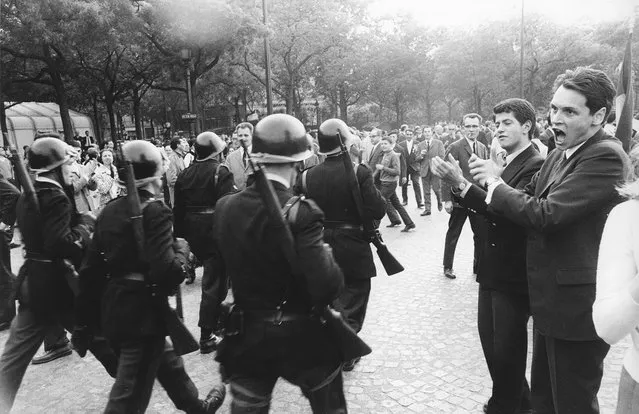
Fifty years ago, as France exploded in mass protests, words scrawled on the walls of the Sorbonne summed up the revolutionary zeal of the time: “Run free, comrade, we’ve left the old world behind!”. Sexual liberation, artistic creativity and anti-capitalism were the order of the day. For those who were there, it was an unforgettable time. The protests swept through a France that was still ruled by the strict conservatism of Gen. Charles de Gaulle, who was then president and banned the concerts of French rocker Johnny Hallyday for causing scenes of mass hysteria. The aftershocks of the protests would be felt for years to come. Here: The crowd applauds the police during the Gaulist demonstration, Avenue Victor Hugo, Paris, France, May 30, 1968. (Photo by Gökşin Sipahioğlu/SIPA Press)
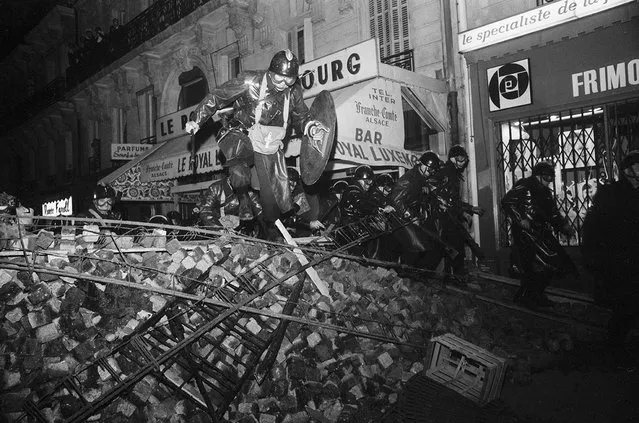
CRS riot policeman wielding shields and batons cross a barricade to charge striking students near the Sorbonne, Paris, France, May 10, 1968. “At first I did not understand what was going on. For hours on the first day of rioting the police allowed the students to do as they liked. The students wrecked everything, ripped up paving stones, chopped down trees, erected barricades, set cars on fire. Later, in a matter of minutes, the CRS charged the students. I asked myself “Why hadn’t they charged earlier?”. I soon understood why. The authorities wanted the public to see the devastation”. (Photo by Gökşin Sipahioğlu/SIPA Press)
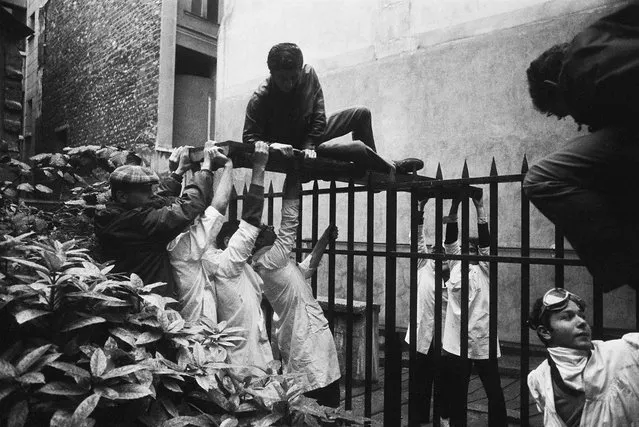
Student riots. Striking students erected the first street barricades at the Place Maubert and then 30,000 people marched from the Place Denfert-Rochereau until they were stopped by CRS riot police at the intersection of rue de Rennes and Boulevard Saint-Germain. In the ensuing conflict a large number of students were injured like this young man, Paris, France, May 6, 1968. (Photo by Gökşin Sipahioğlu/SIPA Press)

A woman sits in a chair on Rue des Saints Peres, near l'Ecole de Medecine, the day after student clashes with police in the Latin Quarter of Paris, France, May 11, 1968. (Photo by Gökşin Sipahioğlu/SIPA Press)
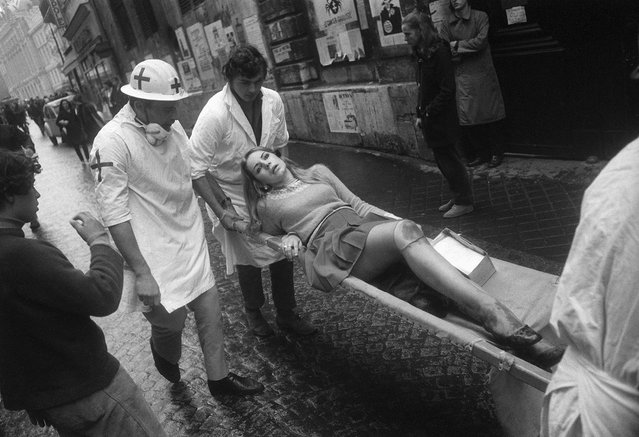
A wounded student is transported by first-aid workers during riots on the Boulevard Saint-Michel, Paris, France, May 6, 1968. (Photo by Gökşin Sipahioğlu/SIPA Press)
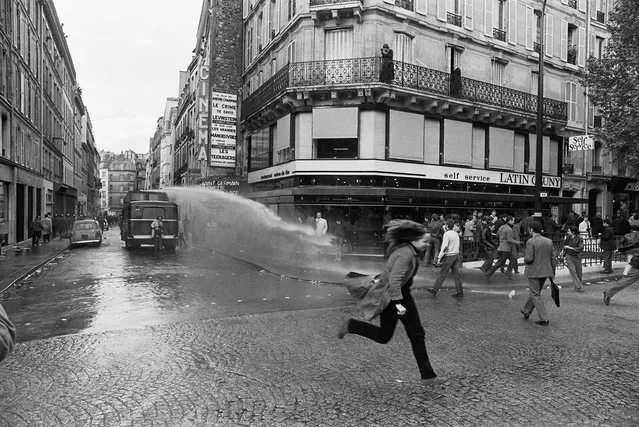
“The night of the barricades” resulted in a violent conflict between CRS riot police and thousands of striking students. Numerous police and students were injured in the clash in the “Mabillon” area on Boulevard Saint Germain, Paris, France, May 6, 1968. (Photo by Gökşin Sipahioğlu/SIPA Press)
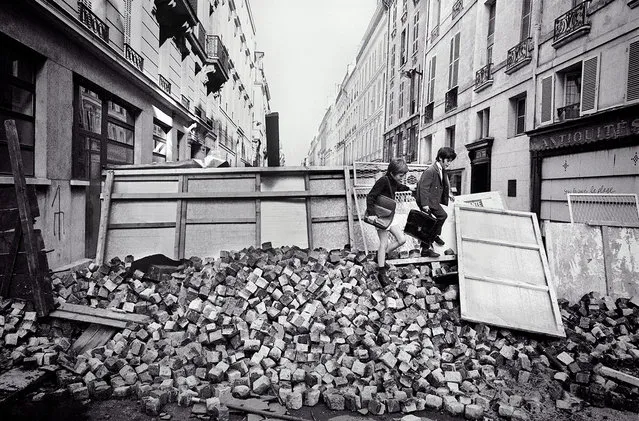
Rue de l’Universite. Although universities were closed during the student riots, elementary schools remained open and young children attended classes, climbing over paving stones at a barricade erected by students, Rue de l’Universite, Paris, France, June 11, 1968. (Photo by Gökşin Sipahioğlu/SIPA Press)
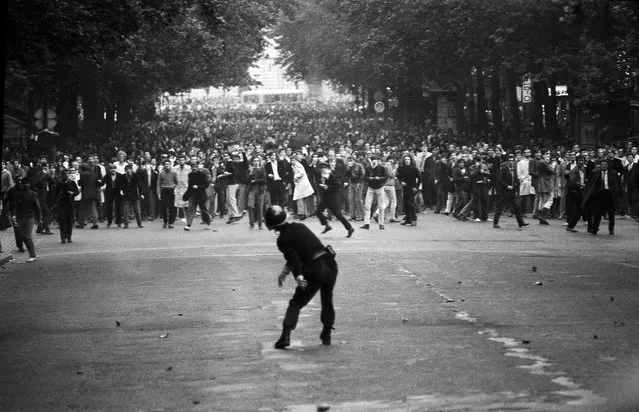
A policeman confronts defiant students ron the Boulevard Saint-Michel during the first day of violent clashes, Cluny Boulevard Saint-Michel, at the intersection of Boulevard Saint-Germain, Paris France, May 6, 1968 . In all, 1,045 civilians were wounded during what became known as “the night of the barricades”. (Photo by Gökşin Sipahioğlu/SIPA Press)
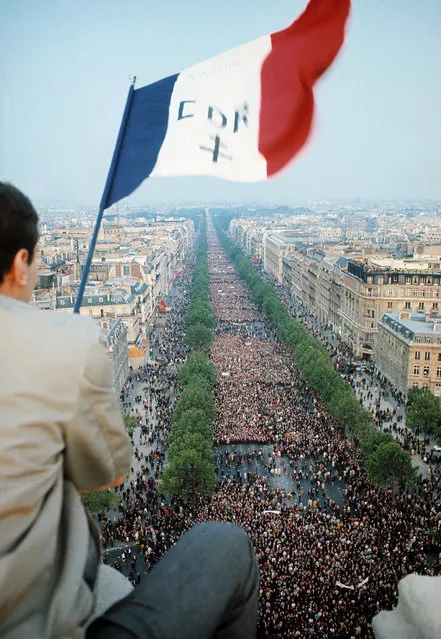
More than a half-million people march up the Avenue des Champs-Elysées from the Place de la Concorde to show support for President Charles De Gaulle after the President gave a radio speech to the nation in which he announced the dissolution of the National Assembly, postponement of the Referendum (to June 16), a change in the government under Prime Minister Pompidou, and a call to civic action “everywhere and immediately to help the government and prefects” facing students’ and workers’ unrest, Place de l'Etoile, Paris, France, May 30, 1968. (Photo by Gökşin Sipahioğlu/SIPA Press)
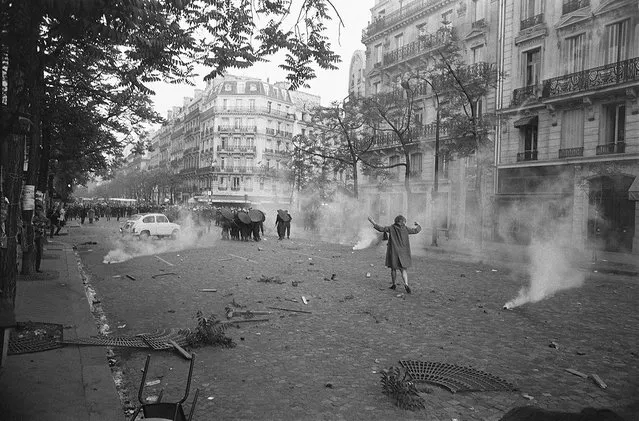
On the first day of violence during student riots, a young woman challenges shield-bearing CRS police in a cloud of tear gas at Place Mabillon on Boulevard Saint-Germain, France, Paris, May 6, 1968. (Photo by Gökşin Sipahioğlu/SIPA Press)
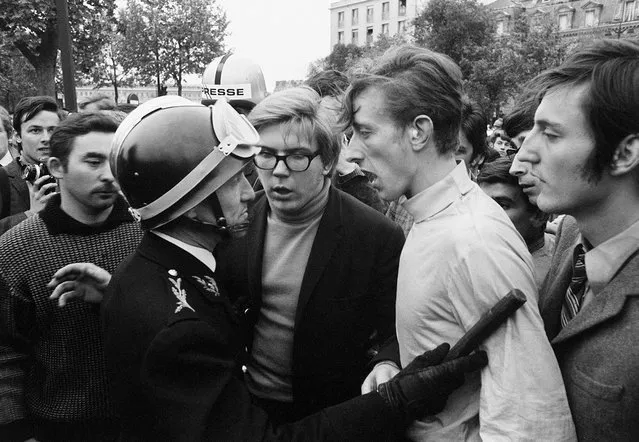
On the Quai d’Orsay at the Pont des Invalides, (the bridge was closed by police), students come face-to-face with a baton wielding riot policeman during a march from Place Denfert-Rochereau towards the Avenue des Champs-Elysees in Paris, France on May 7, 1968. (Photo by Gökşin Sipahioğlu/SIPA Press)
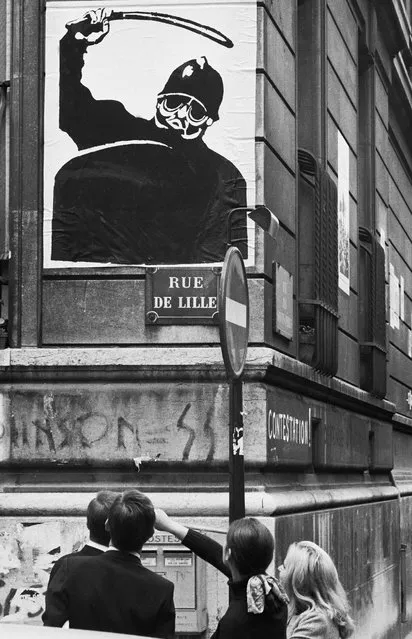
A May '68 poster is seen on a wall of the School of Oriental Languages, Rue de Lille, Paris, France, May 7, 1968. (Photo by Gökşin Sipahioğlu/SIPA Press)
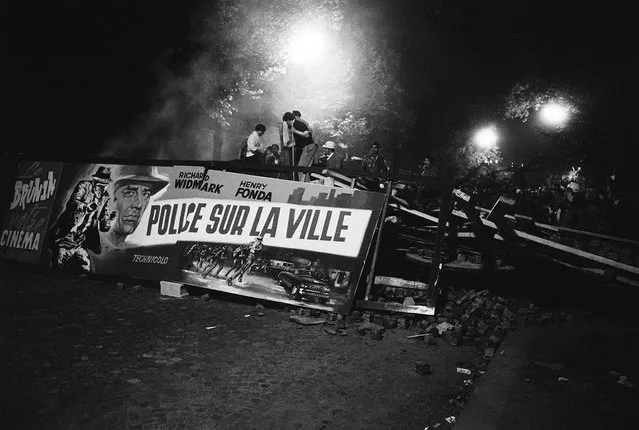
Demonstrating students found a ready-made propaganda banner when they tore down a movie marquee advertising a police film “Police sur la Ville” (“Madigan”) co-starring Richard Widmark and Henry Fonda, Boulevard saint-Michel, Paris,
France, May 10-11, 1968. (Photo by Gökşin Sipahioğlu/SIPA Press)
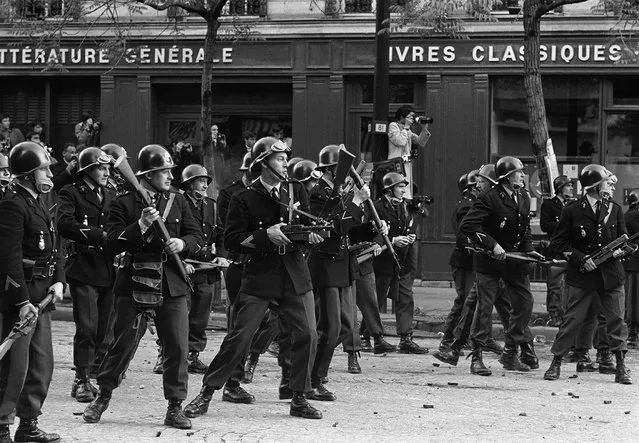
Armed riot police prepare for confrontation with student protesters, Boulevard Saint Germain , Paris, France, May 6, 1968. (Photo by Gökşin Sipahioğlu/SIPA Press)
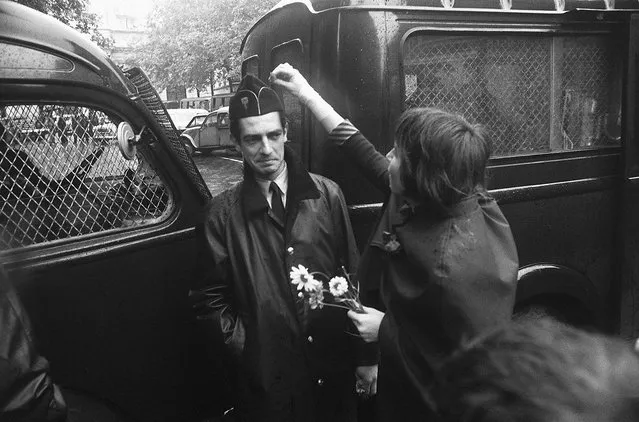
A pacifist student puts a flower in the cap of a wary policeman guarding the Sorbonne during the student riots, Boulevard Saint-Michel, Paris, France, June 16, 1968. May 1968 gave impetus to the women’s liberation movement in France and the recognition of homosexuality. (Photo by Gökşin Sipahioğlu/SIPA Press)
25 May 2018 00:06:00,
post received
0 comments
